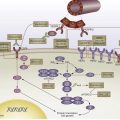
I am privileged and proud to be the editor of the present issue of Hematology/Oncology Clinics of North America , which gathers an outstanding group of contributors from different backgrounds that share passion and commitment for urothelial tumors and that have made possible to put all these recent achievements into perspective.
The entire disease spectrum is covered throughout the different articles. Detailed and updated epidemiology/molecular epidemiology (see Real and Malats) and molecular biology (see Martin-Doyle and Kwiatkowski) for bladder cancer set the basis for a better diagnosis and staging (see Sun and Trinh). For non-muscle-invasive bladder cancer, newer data from individual patient data and meta-analysis set new cutoffs for progression that will eventually move into detailed nomograms that will help select patients for prompt cystectomy (see Weijers, Arentsen, Arends, and Witjes as well as Orsola, Palou, and Solsona). The role of molecular markers and the relevance and customized management for nonurothelial bladder cancer and rare variant histologies (see Willis and Kamat) are addressed from an expert approach.
To follow, we get into two major surgical articles written in extremely comprehensive language and filled with up-to-date novelties. For the new trends in the surgical management of invasive bladder cancer, Preston, Lerner, and Kibel have put together and updated data on the development of robotic-assisted radical cystectomy, the role of extended lymph node dissection, and the evidence supporting the role of Enhanced Recovery After Surgery protocols. All of these approaches are already making a difference in outcomes for the patients undergoing radical cystectomy. The second surgical article provides a comprehensive update on the management of upper urinary tract tumors (see Lucca, Leow, Shariat, and Chang). On the other side of the spectrum and as an alternative to surgery in selected patient populations, options and strategies currently available for bladder preservation (see Jani, Efstathiou, and Shipley) are thoroughly described by the best outstanding experts in the field.
Moving along to the management of muscle-invasive disease, nomograms have been developed to predict relapse-free survival more accurately and to help in identifying patients who are the best candidates for neoadjuvant therapy or who might benefit from adjuvant therapy (see Leow, Fay, Mullane, and Bellmunt). The retrospective genomic analysis of the extreme response phenotype (patient obtaining a complete pathologic response [pT0] when receiving neoadjuvant chemotherapy) has made possible the finding of the ERCC2 mutations predicting an exquisite sensitivity to cisplatin-based chemotherapy. The proactive implementation of translational end points in prospective trial design like the Coxen model, together with additional prediction models in both precystectomy and postcystectomy settings, should improve our ability to choose the most efficacious perioperative treatment. The authors present in their article an unbiased and detailed review of the evidence for both neoadjuvant and adjuvant therapy useful for practical clinical application.
Finally, in the metastatic setting, Abida, Bajorin, and Rosenberg summarize the first-line treatment and prognostic factors of metastatic bladder cancer for platinum-eligible patients, depicting the promising future in this setting. For cisplatin-ineligible patients, a comprehensive update of options—recently reported in first line—are presented in the article by Cathomas, Santis, and Galsky. The management of subsequent second-line therapeutic options and a discussion on emerging new therapies are scholarly addressed by Narayanan, Harshman, and Srinivas.
This issue of Hematology/Oncology Clinics of North America wraps up with two strong insights into the future of urothelial cancer: the role of recently described targeted therapies in conjunction with the new immunotherapy approaches (Sonpavde, Jones, Bellmunt, Choueiri, and Sternberg) and the new therapeutic opportunities that emerge with the description of the intrinsic subtypes of muscle-invasive bladder cancer based on the analysis of gene expression (McConkey and Dinney).
I hope this work will be enjoyed by many and will help put a twenty-first-century perspective on all the knowledge generated to date.
Stay updated, free articles. Join our Telegram channel

Full access? Get Clinical Tree




